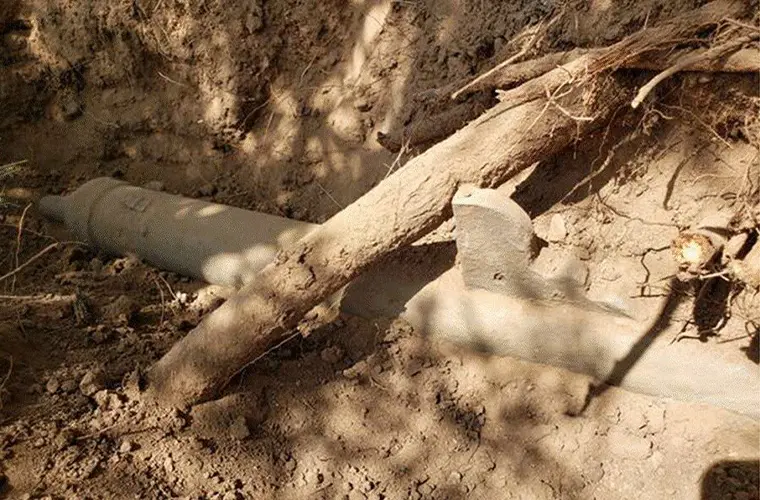Archaeologists have unearthed a nearly 500-year-old bronze cannon in the arid expanse of southern Arizona, marking it the oldest firearm ever discovered in the continental United States.
The remarkable find sheds light on early European expeditions into North America and underscores a significant Native American triumph over Spanish forces.
The cannon was discovered at the site of San Geronimo III, a settlement established in 1541 during the ill-fated expedition led by Spanish conquistador Francisco Vázquez de Coronado.
Researchers’ findings were recently published in the International Journal of Historical Archaeology.
“This wall gun is the first gun known to be associated with the Coronado expedition and is the oldest firearm ever found within the continental USA, and perhaps the oldest cannon currently known on the continent,” researchers wrote.


Measuring 42 inches in length and weighing approximately 40 pounds, the bronze artillery piece is believed to have been cast in Mexico or the Caribbean, as suggested by its plain design, which contrasts with the more ornate styles typical of Spanish craftsmanship of the era.
In the early 16th century, tales of opulent cities north of Mexico spurred Spanish interest in further exploration.
Inspired by accounts from previous conquistadors and the legendary Seven Cities of Cíbola, Viceroy Antonio de Mendoza commissioned an expedition led by Coronado between 1539 and 1542. Coronado, investing heavily in the venture, embarked with 400 soldiers, their families, and approximately 1,500 Indigenous allies, aiming to claim wealth and territory for the Spanish crown.
However, the expedition was disappointed upon discovering the cities and riches described. Instead of gold and large populations, they encountered modest Pueblo communities. The Spanish forces resorted to looting and enslaving Indigenous peoples, actions that sowed seeds of resistance among the native populations.
Historical records indicate that the local Sobaipuri O’odham people, aggrieved by the Spaniards’ oppressive actions, launched a surprise attack on San Geronimo III in 1541.
The assault was devastating for the Spanish settlers, leading to a hasty retreat and the abandonment of the settlement. The recently discovered firearm was found unloaded and showing no signs of use, suggesting it was left behind during this chaotic withdrawal.
This discovery offers a tangible connection to early American history, highlighting the dynamics between European colonizers and Indigenous populations. The cannon serves as a testament to the resistance mounted by Native American groups against European incursions, marking one of the earliest recorded victories over colonial forces in North America.
“Europeans did not return to what became southern Arizona for another 150 years, making this the earliest, most consequential Native American uprising in the continental US,” researchers wrote.
The firearm, often referred to as a “haakbus” or “hook gun,” is designed for both defensive and offensive operations. Its lightweight construction allowed for portability, enabling it to be mounted on a wooden tripod or carried by two individuals.
It was capable of firing a lead ball up to 700 yards and was a formidable weapon intended to breach wooden or light adobe structures. The absence of decorative elements on the cannon suggests it was likely cast in the New World, possibly in Mexico or the Caribbean, regions known for producing more utilitarian weaponry during that period.
The unearthing of this firearm provides invaluable insights into the early interactions between European explorers and Indigenous peoples.
It also underscores the complexities of these encounters, characterized by conflict, resistance, and the resilience of native communities. Moreover, the find enriches our understanding of the technological advancements and military strategies employed during the era of early colonization.
The discovery of the 500-year-old cannon in Arizona poignantly reminds us of a tumultuous chapter in American history.
It marks the presence of European expeditions into the continent and honors the enduring spirit and resistance of the Indigenous populations who stood against colonization.
As researchers continue to study this artifact, it promises to reveal further details about the early dynamics that have shaped the cultural and historical landscape of the United States.
Tim McMillan is a retired law enforcement executive, investigative reporter and co-founder of The Debrief. His writing typically focuses on defense, national security, the Intelligence Community and topics related to psychology. You can follow Tim on Twitter: @LtTimMcMillan. Tim can be reached by email: tim@thedebrief.org or through encrypted email: LtTimMcMillan@protonmail.com

